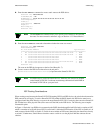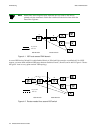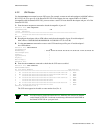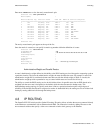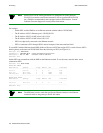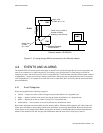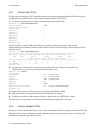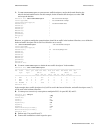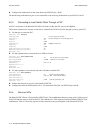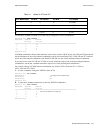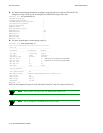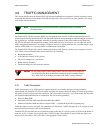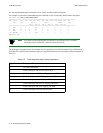
SmartCell ZX-250 User Guide 4-11
Switch Administration PVC Connections
Use the show alarms command to view a list of the currently logged alarms. For example,
SmartCell ZX # show alarms
Index(ALL) :
0 000:00:31:164
---------------------------------------------------
LECS Operational
---------------------------------------------------
Failed to re-establish SAAL connection
Port ID 0x0000000b
T309 10000
1 043:15:56:718
---------------------------------------------------
Failed to re-establish SAAL connection
Port ID 0x0000000b
T309 10000
2 043:29:55:392
More(<space>/q)?:
Alarms are displayed in the following format:
U Alarm number — The index number of the alarm in the circular buffer
U Alarm ID — Unique ID assigned to the alarm
U Time — Time of alarm, in switch up-time in hours, minutes, seconds, and milliseconds
U Object — The object affected by the alarm (port, LEC, and so on)
U Description — Brief message describing the alarm
Alarm messages can be automatically displayed on the SmartCell ZX-250 console. Use the
set AlarmDisplay
command to display alarms on the console as they occur:
SmartCell ZX # set alarmdisplay
alarmDisplay(OFF) : on
SmartCell ZX #
4.4.3 Deleting Events and Alarms
To delete events or alarms currently logged within your SmartCell ZX-250, use the delete events and delete alarms
commands, respectively.
4.5 PVC CONNECTIONS
The SmartCell ZX-250 supports Permanent Virtual Circuits (PVCs), both point-to-point and point-to-multipoint. Use
PVCs to connect devices (that do not support SVCs) to a switch’s local client. Also, use PVCs to make connections
through the SmartCell ZX-250 between devices that support only PVCs.
Use point-to-point PVCs to connect one end node to another for two-way communication. Use point-to-multipoint
PVCs to connect a broadcast end node to a group of receiving end nodes; traffic is one way.
2p›F PVCs use traffic descriptors to define their traffic characteristics. If you are
unfamiliar with traffic descriptors, see Section 4.6.1, “Traffic Descriptors.”



